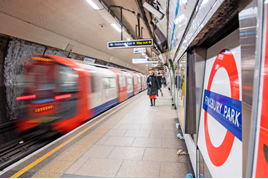Neil revealed some of the questions that must be answered before ATO can be implemented. They centre on ‘what if’ for a variety of scenarios.
If the driver were to be incapacitated, does the train stop or continue to the next station? What should the train do if a passenger pulls an alarm handle - stop or continue to the next station? Should a train stop automatically if something is caught in a door? Train fires - stop or continue? If platforms have emergency stop buttons, should the train stop? What happens if the traction supply fails?
If a company opts for GoA2 (see panel, above), it will keep a driver on the train but not driving the train. This begs the question of how that driver retains his ability and how the driver remains alert to the need to take over. Victoria Line trains work under driver control to and from their depot.
Nevertheless, Neil was enthusiastic: “The benefits are great. They’re absolutely fantastic. We have virtually no SPADs (signals passed at danger) under ATO. When we do they’re usually from a system fault, not the driver.”
Consistent driving style is one of ATO’s advantages, but it’s not always good for the track because each type of train will brake or accelerate at the same point. This can lead to defects and rail wear being concentrated on short sections.
Also tricky will be the decision on how trains should perform. Should they brake or accelerate to the best of their ability, or more gently to save fuel or reduce brake pad wear? Or should trains try to keep as close to the timetable as possible?
Is it better to run at line speed, stop at a signal protecting a junction and then restart after another train has crossed, or run slowly and not need to stop through the junction? Or brake differently and approach the signal slowly, reaching it just as its clears from red? The answer will depend on what’s important to the railway.
Similar questions affect the development of Connected Driver Advisory Systems (CDAS). They take the DAS idea of offering drivers advice on the optimum speed to keep to the timetable by adding a link to the signalling system. In this way, CDAS can advise a driver the best speed that will prevent him having to stop at a blocked junction, which should smooth the flow of trains. ATO could be considered a link between CDAS and the traction and brake controls of a train.
ATO offers the possibility of finer control than a driver can achieve because it can more clearly know what the train management system wants it to do. It could receive information about its ideal speed more frequently than a driver could from signals spaced every mile or so. In this way an ATO train is more accurately a computer-controlled train, even though the computer might be many miles away in a control centre.
Although delegates attending February’s conference were confident that we would see main line ATO in Britain, it’s clear that there is plenty of difficult work to do before it becomes normal.
Europe must agree clear specifications, manufacturers must develop products, Britain must resist the temptation of adding bespoke features to those products, and passengers must be convinced that ATO is safe.
Of course, if there’s no forward view, passengers might not even realise there’s no driver. Personally, I’d trust the technology and enjoy the view!
This feature was published in RAIL 824 on 8th April 2017















Login to comment
Comments
No comments have been made yet.